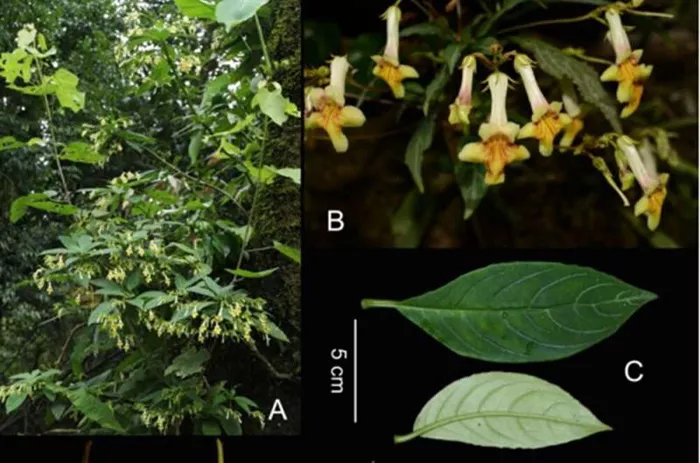New Lysionotus Species Discovered in Yunnan, China.
Researchers have identified a new species of Lysionotus in Yunnan, China. This genus includes over 30 species that range from the Himalayas to southern China, Indo-China, and southern Japan. Approximately half of the 18 known species are found in Yunnan.
In August 2019, during a botanical survey in southwestern Yunnan, a team from the Kunming Institute of Botany (KIB) discovered an unknown Lysionotus species. This species, which has unusual flowers, was found on trees in the secondary forests of Cangyuan County. The following year, another group from the Xishuangbanna Tropical Botanical Garden (XTBG) also found this species nearby.
The researchers conducted detailed morphological studies, comparing this new species to others in the genus. They consulted literature and examined herbarium specimens of Lysionotus. Their research confirmed that they had discovered a new species, which they named Lysionotus cangyuanensis, after its location in Cangyuan County.
This new species has been published in the journal Taiwania.
Lysionotus cangyuanensis is an epiphytic subshrub. It shares similarities with Lysionotus sulphureoides and L. coccinus in both appearance and ecology. However, it can be distinguished from these species by several features: the size of its leaf blades, the shape of its bracts, the size of its corolla, the markings in its throat, and the shape of its anthers.
The leaf blades of this new species can grow up to 13 cm long, and the bracts are either elliptical or oblong. The corolla measures 3.5–4 cm long, featuring 15 purple lines in the throat and a purple patch at each junction of the upper and lower lips. Additionally, the anthers are heart-shaped.
Lysionotus cangyuanensis flowers from August to September. Currently, only two populations have been identified in the secondary forests of Cangyuan County. One population consists of fewer than five individuals on an Alnus nepalensis tree at an elevation of 1,802 meters. The second population has fewer than ten individuals on two large trees located about 50 meters apart, at an elevation of approximately 2,000 meters.
“Based on the IUCN Red List Categories and Criteria (IUCN, 2022), this new species should be classified as ‘Data Deficient’ (DD),” said Shen Jianyong of XTBG, one of the study’s corresponding authors.
Related topics:
- New Research Identifies the Favorite Legume Flowers of Australian Honeybees
- Caring for Your Plants This Winter: Tips for a Thriving Garden
- Over 20% of Earth’s plant species are unique to islands, and we must act quickly to protect them


